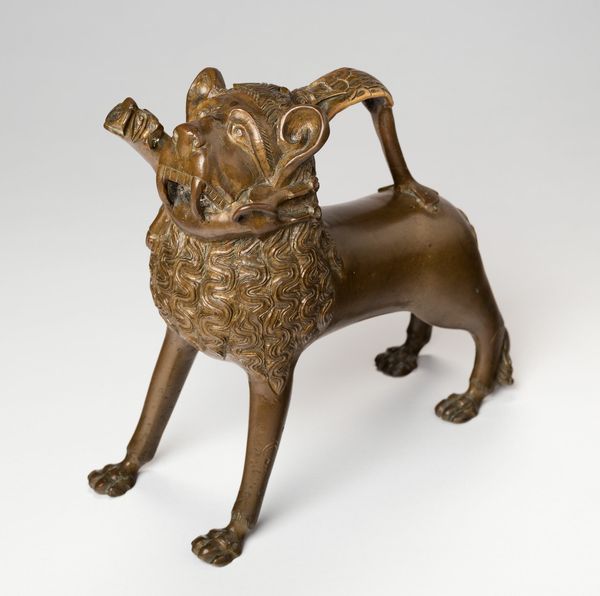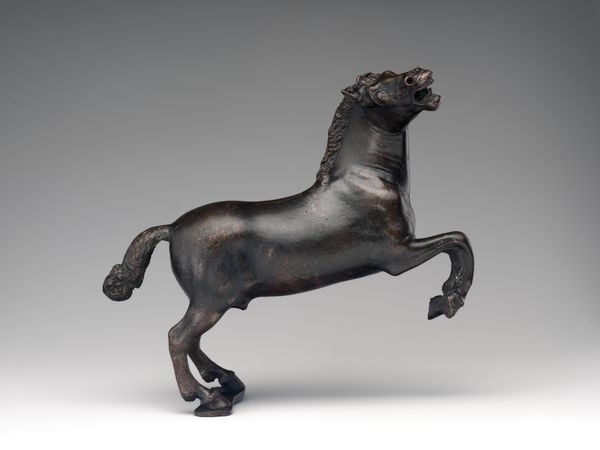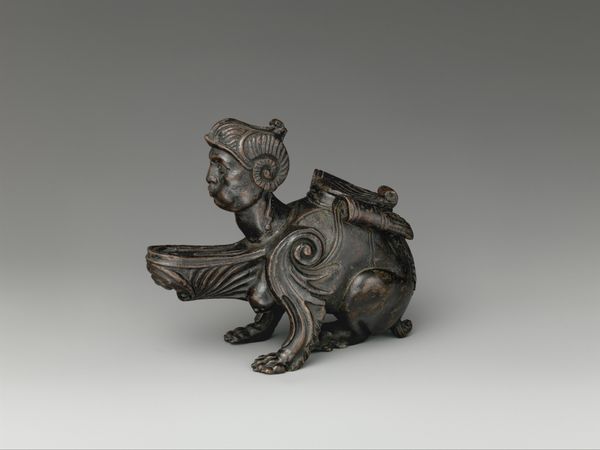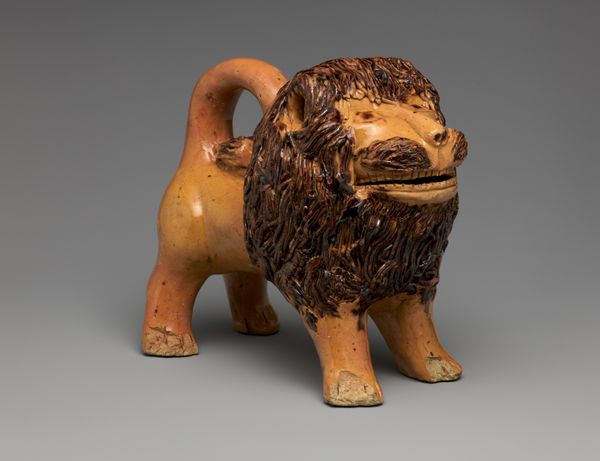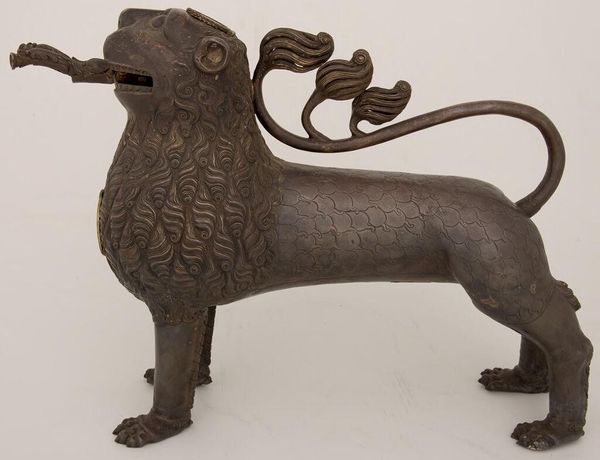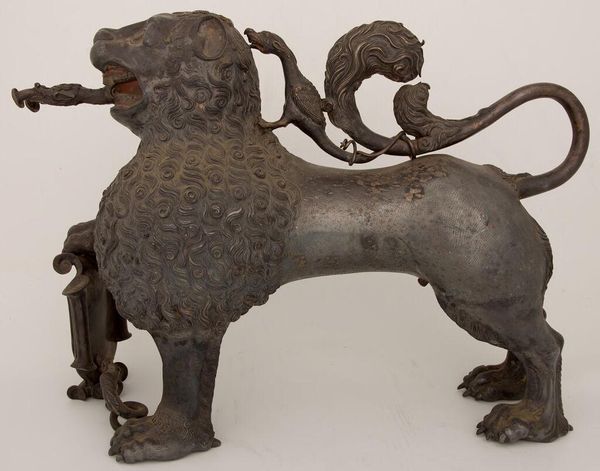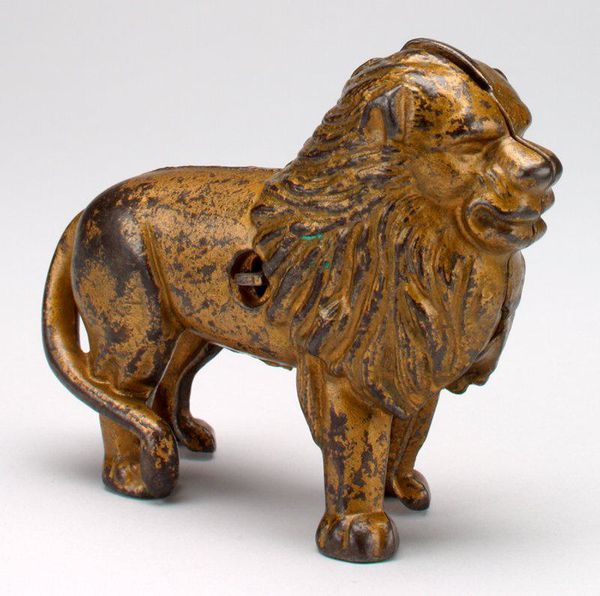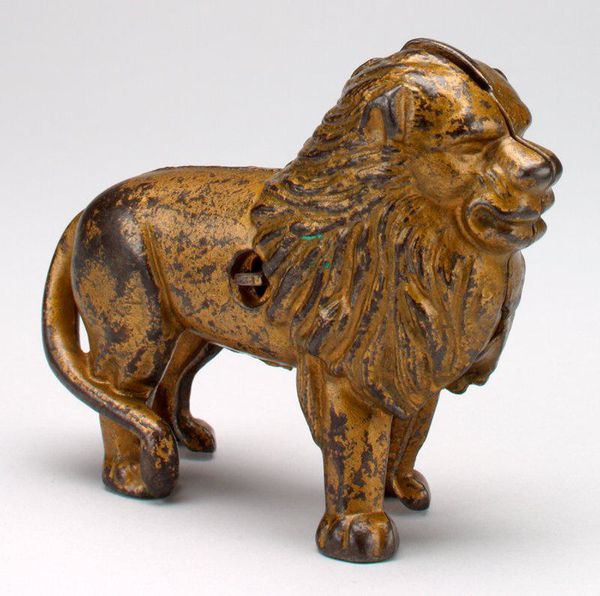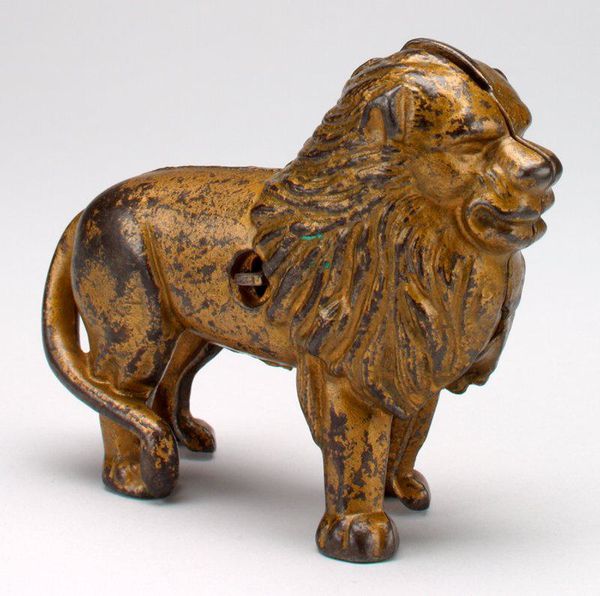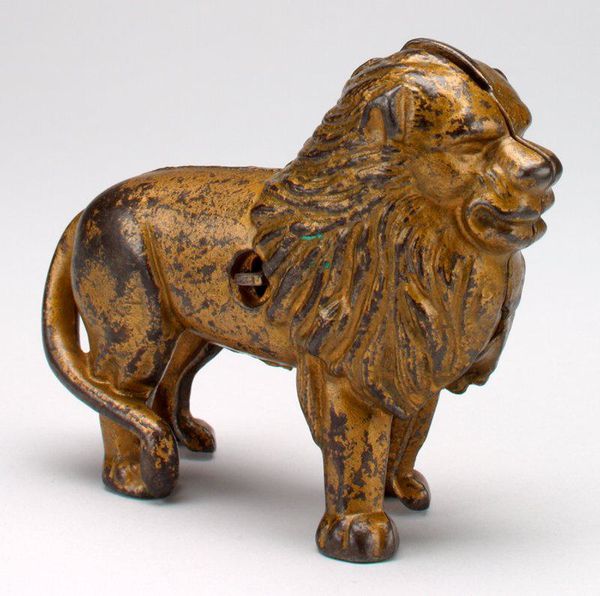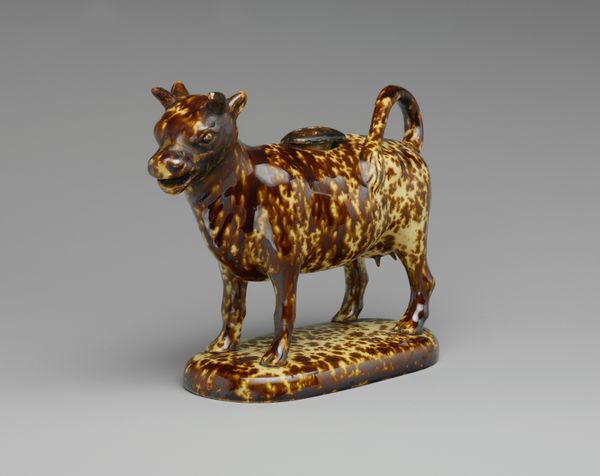
bronze, sculpture
#
medieval
#
animal
#
sculpture
#
bronze
#
figuration
#
sculpture
Dimensions: height 34.5 cm, width 33.5 cm, depth 14.5 cm, width 31.0 cm, depth 14.5 cm
Copyright: Rijks Museum: Open Domain
Editor: Here we have an aquamanile in the form of a lion, created around 1375-1400, in bronze, by Meester Bernhuser. The detail in the casting is incredible; look at the mane. What's fascinating to me is that it's so clearly functional as a vessel, but also this imposing, almost heraldic beast. What can you tell me about it? Curator: Let's think about the context. It's not *just* an object; it's a product of late medieval workshops. Consider the labor involved in mining the ore, the complex process of bronze casting using the lost-wax technique, and the skilled artisans who refined the mold and chased the details. Each stage is crucial. Where was this bronze sourced, and what trade networks facilitated its movement? These questions give a sense of the political and economic factors shaping artistic production. Editor: That's interesting. I hadn’t really thought about where the metal itself came from, just its function in a wealthy household. It’s clear someone put an immense amount of work into making the item. So, is this aquamanile then, a display of technological prowess, and therefore of social power, via materials and production? Curator: Precisely! The lion imagery conveys power, but it's also about displaying resources and skills. Bronze was a valuable material; a household owning this object wanted others to know the resources it took to make it. Moreover, objects like these blur boundaries. It is both functional and decorative, which prompts the questioning: Is it "high" art or craft? Ultimately, considering all aspects leads us to recognize the intense process behind this creation. Editor: I see, so focusing on materials and manufacturing helps to better understand the art's creation and what the maker was hoping to display by crafting the bronze lion. I'll remember to think about labor and context in artwork more moving forward. Thanks for your time! Curator: My pleasure. Considering production illuminates social relationships and material conditions embedded within art.
Comments
No comments
Be the first to comment and join the conversation on the ultimate creative platform.
